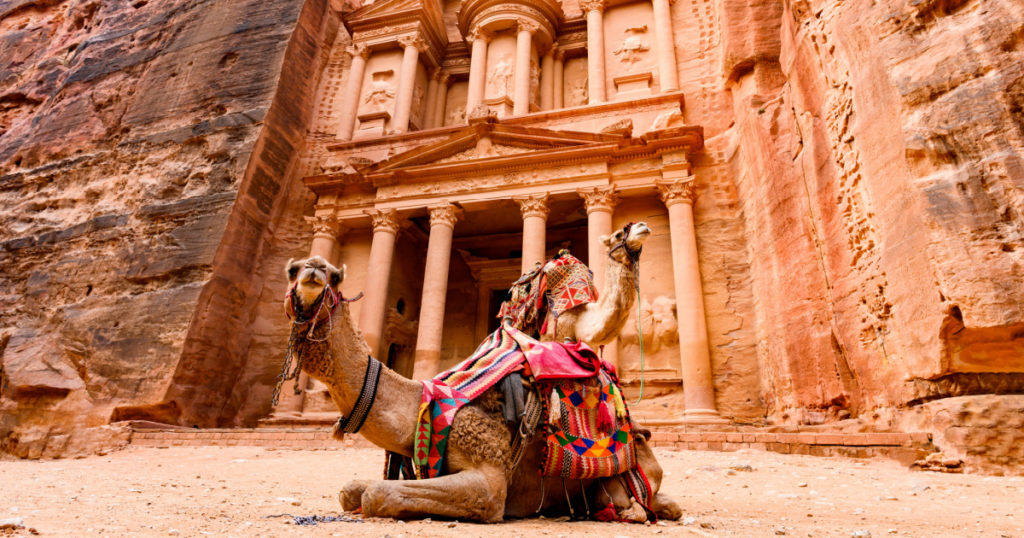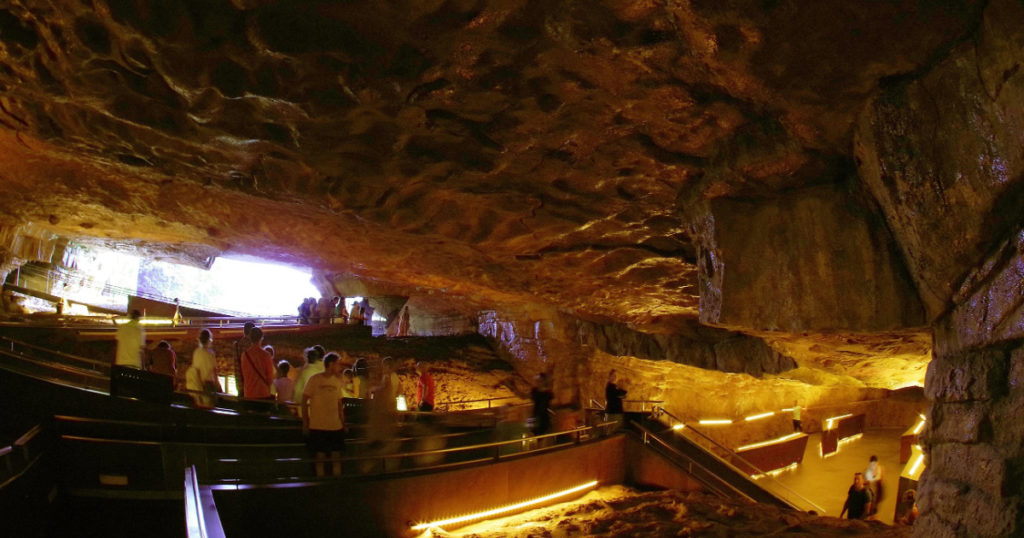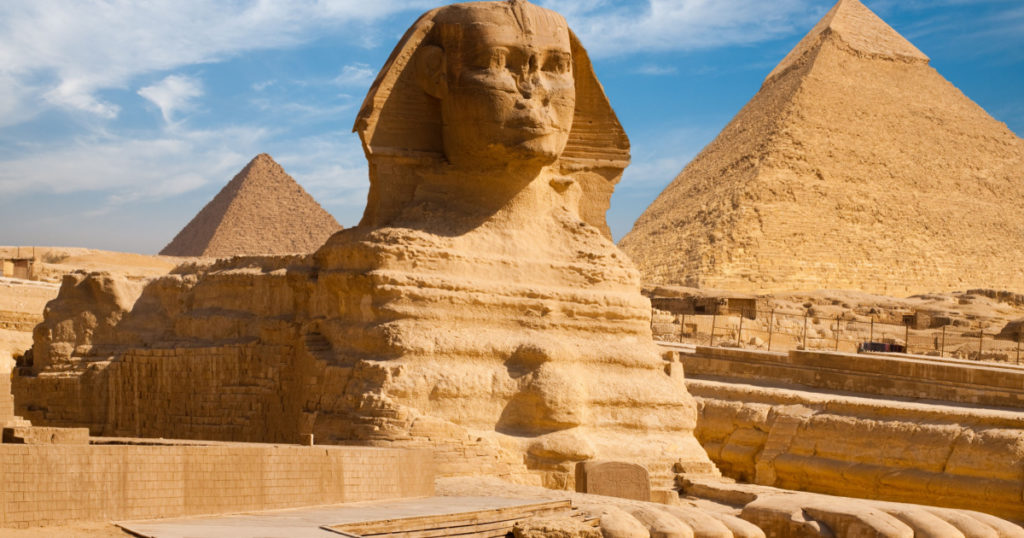Traveling is an incredible means to expand perspectives and ignite creativity, but the repercussions emerge when millions of tourists gather annually at the same location. Regrettably, some of the planet’s most cherished sites are undergoing degradation due to the well-intentioned impact of visitors. From Egypt’s revered Great Pyramids to destinations featured in blockbuster films, these revered locations face a precarious future. The startling truth is how much the allure of that Instagram or Facebook photo can contribute to environmental deterioration. It might be worth reconsidering your next travel itinerary to bypass these heavily frequented spots, ensuring the chance for future generations to revel in their wonder.
Here are a few of the commonly frequented destinations that tourists seem to disregard
1. Bali, Indonesia

- Tourists Per Year: 6.3 million
- Damages: Cultural degradation
Bali, Indonesia, has long been synonymous with a serene and blissful experience. However, the reality contrasts with this ideal as the destination has witnessed a staggering influx of over 6 million visitors annually in recent years. While this surge has notably bolstered the local economy, it has sparked concerns regarding the erosion of the region’s cultural essence and spiritual ambiance. Reports in various media outlets and social platforms lament the fading “magic of Bali,” yet this remains a subject of ongoing debate.
2. Venice, Italy

- Tourists Per Year: 5.5 million
- Damages: Impact on locals, pollution
Venice, Italy, renowned for its intricate waterway system, draws approximately 5.5 million tourists annually. While this has provided a boon for local businesses, the surge in tourism has posed challenges for the city’s residents. During peak months, the excessive influx of tourists hampers the routine activities of the locals, leading to congested areas and strained local services. This often unexplored aspect contrasts with the picturesque portrayal of the city in movies.
3. Mount Everest, Nepal

- Tourists Per Year: 1,000
- Damages: Pollution
Mount Everest, the ultimate challenge for seasoned climbers, hosts fewer than 1,000 climbers annually. However, the environmental impact remains significant as climbers, equipped with substantial gear, inadvertently leave a trail of waste, ranging from food wrappers to discarded oxygen tanks. The concentrated presence of numerous climbing teams simultaneously can pose logistical challenges and exacerbate environmental concerns.
4. Petra, Jordan

- Tourists Per Year: 1 Million
- Damages: Impact on sacred site, damage to sandstone
Petra in Jordan, a site of immense historical significance featuring intricately carved temples in pink sandstone cliffs, attracts over a million visitors yearly. The delicate nature of the site, coupled with the substantial visitor traffic, raises concerns about the erosion of the sandstone structures and the diminishing sanctity of the place due to the sheer volume of visitors.
5. Cozumel, Mexico

- Tourists Per Year: 4 million
- Damages: Dying coral reefs
Cozumel, an island situated off the coast of Mexico in the Caribbean Sea, lures over four million tourists annually. Despite being home to a relatively small population of about 100,000, the island faces the detrimental effects of over-tourism. The thriving tourism industry has strained the island’s ecosystems, resulting in the endangerment of local fauna and the rapid bleaching of once-vibrant coral reefs.
6. Lake Lucerne, Switzerland

- Tourists Per Year: 1.3 million
- Damages: Severe overcrowding
Switzerland, known for its breathtaking landscapes, hosts over 1.3 million tourists annually at Lake Lucerne, which unfortunately detracts from its natural allure. The primary issue stems from the extensive overcrowding, notably highlighted during events like a cliff-diving spectacle in 2018. The influx of visitors packed the lake with inflatable rafts, resulting in an overcrowded and potentially hazardous environment, heightening the risk of accidents, particularly drowning.
7. Taj Mahal, India

- Tourists Per Year: 4.4 million
- Damages: Severe overcrowding
The iconic Taj Mahal in India attracts over 4.4 million visitors annually, positioning itself as a critical tourist magnet. However, the immense footfall has led to severe overcrowding, prompting local authorities to raise ticket prices and impose fines for prolonged stays in an effort to manage the influx. Despite these measures, the continuous flood of visitors poses challenges, making it challenging for tourists to capture the perfect picture of this architectural wonder.
8. Hanoi’s “Train Street”, Vietnam

- Tourists Per Year: 29 million (Hanoi)
- Damages: Puts locals at risk
Vietnam, known for its tourist appeal, faced issues with Hanoi’s “Train Street,” a renowned spot featuring a 117-year-old railway track running through a bustling street. However, the popularity among tourists, particularly those taking selfies, posed a risk due to the influx of people on the active train track. To mitigate this hazard, local authorities in 2019 ordered the closure of businesses along the street, aiming to discourage visitors.
9. Fjadrargljufur Canyon, Iceland

- Tourists Per Year: 300,000
- Damages: Devastation to the fauna
Iceland’s scenic Fjadrargljufur Canyon saw a surge in visitors after its appearance in a Justin Bieber music video in 2015, resulting in a substantial increase in annual footfall. The sudden popularity took a toll on the local flora and fauna, devastating the area due to overwhelming foot traffic. Consequently, local authorities temporarily closed the canyon in 2019 to facilitate necessary conservation work.
10. Komodo Island, Indonesia

- Tourists Per Year: 50,000
- Damages: Endangerment of rare local species
The Indonesian authorities expressed growing concern over the escalating visitor numbers to Komodo Island, a region designated for conservation. To safeguard the area, a visitor cap of 50,000 individuals per year was imposed. Additionally, erecting hotels or other accommodations on the island was prohibited to prevent disturbance to the limited population of the precious Komodo dragons, preserving the habitat of these rare local species.
11. Machu Picchu, Peru

- Tourists Per Year: 500,000
- Damages: Severe damage to the site, including toppled walls
Machu Picchu, a renowned relic from the Inca era in Peru, draws over 500,000 visitors annually. Despite most visitors being respectful, incidents occur, leading to significant damage. In a notable event in 2020, a group of tourists visiting the historical citadel at night inadvertently caused a stone wall, part of the Temple of the Sun, to collapse, damaging the floor. Repairing this priceless site incurred significant costs, the exact amount of which remains unclear but certainly substantial and challenging
12. Burning Man, Nevada, USA

- Tourists Per Year: 80,000
- Damages: $5-10 million per year to throw the festival, including clean-up
Burning Man, once a smaller festival in Nevada attended by a close-knit group, has grown in reputation, attracting around 80,000 participants annually. The event’s escalating scale has led to soaring costs, totaling an estimated $10 million, with a substantial portion earmarked for extensive clean-up efforts that impact the Black Rock desert’s environment.
13. Pig Island, The Bahamas

- Tourists Per Year: 6 million visit the Bahamas
- Damages: Pig deaths, pollution
While an unexpected sight for tourists, Pig Beach in the Bahamas’ Exuma Island hosts a colony of feral pigs. The increasing number of visitors to this spot leads to an unfortunate consequence: tourists feeding the pigs human food and garbage, resulting in sickness among the animals. This surge in tourist interaction poses risks to the pigs’ health and the environmental balance of the area.
14. Bubble Gum Alley, San Luis Obispo, California, USA

- Tourists Per Year: 200,000+
- Damages: Severe damage to the walls
San Luis Obispo’s Bubble Gum Alley, a peculiar attraction adorned with chewing gum left by visitors, draws over 200,000 tourists annually. While unique, the accumulation of gum on the walls incurs significant damage, causing locals to regard it as an eyesore, prompting calls for repair despite its quirky appeal.
15. Ibiza, Spain

- Tourists Per Year: 3 million
- Damages: Untold damages from partiers
Ibiza, a renowned destination in Spain for its vibrant club scene, attracts around 3 million tourists annually. However, the revelry and party culture have resulted in considerable damage to the local environment. The influx of tourists brings forth noise pollution, cultural erosion, and substantial waste, creating an overall detrimental impact on the island’s ecosystem and traditional way of life.
Read: Northern Michigan restaurant closes early due to ‘rude’ and ‘arrogant’ tourists
16. Maya Bay, Phi Phi Islands, Thailand

- Tourists Per Year: 260,000
- Damages: Impact on environment
Maya Bay, nestled in Thailand’s Phi Phi Islands, gained fame following its feature in the movie “The Beach,” starring Leonardo DiCaprio. The beach witnessed a rapid surge in visitor numbers, reaching an overwhelming 5,000 people per day by 2019, posing a management challenge for the locals. Consequently, authorities made the tough decision to close the location due to severe environmental damage. The closure was extended for two additional years to facilitate environmental recovery, with plans to implement stricter regulations upon reopening.
17. Cave of Altamira, Spain

- Tourists Per Year: 100,000+
- Damages: Damage to the paintings
The prehistoric paintings within the Cave of Altamira in Spain have attracted significant interest over the years. The caves faced closure in 1977 due to damage incurred by the paintings. Despite limited reopening in 1982, issues persisted with the appearance of mold in 2002, leading to the closure of the cave once again. Although discussions about reopening have occurred intermittently, the prospect remains uncertain, as it could potentially jeopardize the preservation of these precious ancient paintings.
18. Santorini, Greece

- Tourists Per Year: 2 million
- Damages: Damage to local architecture and streets
Santorini, known for its stunning vistas and iconic white cubic houses, draws over two million tourists annually. However, the surge in tourist numbers has damaged the local architecture, aggravated by visitors climbing on walls for ideal photo opportunities. The island’s aged structures and the influx of tourists have necessitated substantial financial investments by the local government to address damages caused, particularly by avid social media users seeking picturesque shots.
19. Pont Des Arts, Paris, France

- Tourists Per Year: 30 million
- Damages: Severe structural damage to the bridge
The Pont Des Arts bridge in Paris has been a beloved spot for tourists and couples. However, the tradition of affixing padlocks to the bridge as a symbol of love, reaching over a million locks by 2015, resulted in severe structural strain. To mitigate the bridge’s deteriorating condition, authorities had to remove the locks and replace the panels, resulting from the accumulated weight from this gesture of affection.
20. Duckbill, Oregon, USA

- Tourists Per Year: Unknown
- Damages: Purposeful destruction of formations
Duckbill in Oregon was renowned for its distinct rock formation resembling a duck’s head, attracting visitors for its uniqueness. In 2016, several individuals deliberately pushed the formation down, reportedly due to safety concerns after an earlier accident. This act of destruction dismayed locals, marking the end of the attraction’s iconic natural feature.
21. “Joker Stairs”, Bronx, New York, USA

- Tourists Per Year: Unknown
- Damages: Impact on locals trying to use the stairs
The Bronx neighborhood’s “Joker Stairs” gained popularity after the portrayal of a famous scene in the 2019 movie “Joker.” Visitors frequent the stairs for selfies and recreation, which affects the locals’ access to this busy thoroughfare. This influx of tourists clashing with local residents has led to conflicts, notably when someone threw eggs at individuals taking selfies, indicating tensions arising from the disruption caused by these visitors.
22. The Great Pyramids, Egypt

- Tourists Per Year: 14.7 million
- Damages: Wearing away paintings and other artifacts
The Great Pyramids of Egypt, a renowned tourist attraction, hosts millions of visitors annually. The continuous flow of tourists inadvertently contributes to the degradation of the site. Actions such as rubbing bags on walls and the moisture from visitors’ breath inside passageways lead to wear and tear, raising concerns about the long-term preservation of these ancient structures.
23. The Spanish Steps, Rome, Italy

- Tourists Per Year: 100,000+
- Damages: Damage to the steps
Rome’s iconic Spanish Steps, popular for photo opportunities, have experienced significant wear and tear over the years. In response, authorities implemented stringent regulations, such as a “no sitting” rule, resulting in fines exceeding 400 euros for violators. Families with young children face restrictions, as strollers are prohibited from touching the steps, making it challenging for them to access the view from the top.
24. Stonehenge, UK

- Tourists Per Year: 800,000
- Damages: Writing on the stones, taking bits of the stone
Stonehenge, a UNESCO World Heritage site, restricted visitor access due to past vandalism and theft. While tourists in previous years could approach and touch the stones, instances of damage and theft led to roping off the landmark in 1977. Present-day visitors cannot get up close and touch the stones, hindering the full experience due to past tourist-related damage.
25. The Galapagos Islands, Ecuador

- Tourists Per Year: 150,000
- Damages: Impact on wildlife
The Galapagos Islands, renowned for their unique biodiversity, attract nature enthusiasts. However, despite not being heavily visited, the islands face threats from over-tourism. The increasing number of tourists necessitates the construction of more hotels, posing a significant threat to the local environment and wildlife. While tourism aids the local economy, there’s a delicate balance concerning the impact on the island’s fragile ecosystem.